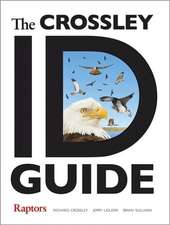Molecular Origins of Brain and Body Geometry: Plato's Concept of Reality is Reversed
Autor Antonio Lima-de-Fariaen Limba Engleză Hardback – 4 noi 2014
There are no ”fancy curiosities” in nature. Every pattern is a product of a molecular cascade originating in genes and a living organism arises from the collaboration of these genes with the outer physical environment.
Tropical fishes are as startling in their colors and geometric circles as peacocks. Tortoises are covered with the most regular triangles, squares and concentric circles that can be green, brown or yellow. Parallel scarlet bands are placed side by side of black ones along the body of snakes. Zebras and giraffes have patterns which are lessons in geometry, with their transversal and longitudinal stripes, their circles and other geometric figures. Monkeys, like the mandrills, have a spectacularly colored face scarlet nose with blue parallel flanges and yellow beard.
All this geometry turns out to be highly molecular. The genes are many and have been DNA sequenced. Besides they not only deal with the coloration of the body but with the development of the brain and the embryonic process. A precise scenario of molecular events unravels in the vertebrates.
It may seem far-fetched, but the search for the origin of this geometry made it mandatory to study the evolution of matter and the origin of the brain. It turned out that matter from its onset is pervaded by geometry and that the brain is also a prisoner of this ordered construction. Moreover, the brain is capable of altering the body geometry and the geometry of the environment changes the brain.
Nothing spectacular occurred when the brain arrived in evolution. Not only it came after the eye, which had already established itself long ago, but it had a modest origin. It started from sensory cells on theskin that later aggregated into clusters of neurons that formed ganglia. It also became evident that pigment cells, that decide the establishment of the body pattern, originate from the same cell population as neurons (the neural crest cells). This is a most revealing result because it throws light on the power that the brain has to rapidly redirect the coloration of the body and to change its pattern.
Recent experiments demonstrate how the brain changes the body geometry at will and within seconds, an event that could be hardly conceived earlier. Moreover, this change is not accidental it is related to the surrounding environment and is also used as a mating strategy. Chameleons know how to do it as well as flat fishes and octopuses.
No one would have dared to think that the brain had its own geometry. How could the external geometry of solids or other figures of our environment be apprehended by neurons if these had no architecture of their own? Astonishing was that the so called ”simple cells”, in the neurons of the primary visual cortex, responded to a bar of light with an axis of orientation that corresponded to the axis of the cell’s receptive field.
We tend to consider our brain a reliable organ. But how reliable is it? From the beginning the brain is obliged to transform reality. Brain imagery involves: form, color, motion and sleep.
Unintentionally these results led to unexpected philosophical implications. Plato’s pivotal concept that ”forms” exist independently of the material world is reversed. Atoms have been considered to be imaginary for 2,000 years but at present they can be photographed, one by one, with electron microscopes.
The reason why geometry has led the way in this inquiry is due to the fact that where there is geometry there is utter simplicity coupled to rigorous order that underlies the phenomenon where it is recognized. Order allows variation but imposes at the same time a canalization that ispatent in what we call evolution.
| Toate formatele și edițiile | Preț | Express |
|---|---|---|
| Paperback (1) | 642.51 lei 6-8 săpt. | |
| Springer International Publishing – 23 aug 2016 | 642.51 lei 6-8 săpt. | |
| Hardback (1) | 652.31 lei 3-5 săpt. | |
| Springer International Publishing – 4 noi 2014 | 652.31 lei 3-5 săpt. |
Preț: 652.31 lei
Preț vechi: 767.42 lei
-15% Nou
Puncte Express: 978
Preț estimativ în valută:
124.82€ • 133.48$ • 104.07£
124.82€ • 133.48$ • 104.07£
Carte disponibilă
Livrare economică 27 martie-10 aprilie
Preluare comenzi: 021 569.72.76
Specificații
ISBN-13: 9783319060552
ISBN-10: 3319060554
Pagini: 188
Ilustrații: XV, 188 p. 120 illus., 105 illus. in color.
Dimensiuni: 210 x 279 x 17 mm
Greutate: 0.75 kg
Ediția:2014
Editura: Springer International Publishing
Colecția Springer
Locul publicării:Cham, Switzerland
ISBN-10: 3319060554
Pagini: 188
Ilustrații: XV, 188 p. 120 illus., 105 illus. in color.
Dimensiuni: 210 x 279 x 17 mm
Greutate: 0.75 kg
Ediția:2014
Editura: Springer International Publishing
Colecția Springer
Locul publicării:Cham, Switzerland
Public țintă
ResearchCuprins
Introduction.- Part I: The Skeleton - the Primary Structure that Sets Vertebrates Apart - is an Evasive Structure.- Well-Defined Geometric Patterns Appeared in Animal Evolution Independently of the Skeleton.- Astonishing Gene Permanence throughout Vertebrates and the Origin of the Skeleton.- Some of the Most Important External Organs in Mammals have no Skeleton.- Body Geometry Follows the Skeleton only Partially.- Part II: The Geometry of the Vertebrate Body Takes the Form of Parallel Stripes and Concentric Circles which are the Products of Molecular Cascades.- Longitudinal and Transversal Stripes in Vertebrates.- The Geometric Patterns of Zebras and of Transgenic Mice are Directed by Specific Genes - the Geometry of Mammals Becomes Also Molecular.- The Eye - a Main Center of Circularity with Implications for Development and Evolution.- The Circularity of the Vertebrate Body.- Concentric Circles are a General Feature of Vertebrates.- Two Poles of Circularity: Head-Neck and Rump.- Part III: Geometry - an Obsession of the Animal and Human Minds.- Science from its Onset to the Present has been Pervaded by Geometry.- Spirals Produced by Inert Matter as well as by Spiders and Humans.- Hexagons Formed by Molecules and by the Minds of Wasps and Humans.- Part IV: The Mind Consists of the Same Matter that has Displayed Order and Coherence throughout its Evolution.- It may Sound Outrageous but the Human Condition Appears to be Anchored in the Organization of Galaxies.- The Evolution of Matter is Characterized by Geometry and Permanence.- Self-Assembly - the Primary Source of Coherence.- Part V: The Brain has its Own Geometry and is Able to Change the Body’s Geometry in Seconds.- The Presence of Chromosomes is not Obligatory for Brain Function Brain, Eye, Blood and Skin Cells Work Efficiently without a Nucleus.- The Ordered Origin of the Brain.- The Brain Turns Out to have its Own Geometry.- Left and Right Side, of the Body and of the Brain, are not Mirror Images andBehave Independently.- How the Brain Changes the Body Geometry at Will.- Part VI: The Brain is an Unreliable Magician.- The Concept of Soul Became Evident Following the Agricultural Revolution 8,000 B.C.- How it Changed Since Then.- Brain Imagery - Visual Perception of Form, Color and Motion.- The Dream - Another Form of Brain Imagery.- Plato had no Electron Microscope - Molecular Geometry Reverses his Concept of Reality.
Notă biografică
Lima-de-Faria is Professor Emeritus of Molecular Cytogenetics at Lund University, Lund, Sweden. This is his seventh book dealing with the molecular organization of the chromosome and its implications for the understanding of the mechanisms responsible for biological evolution.
Textul de pe ultima copertă
New concepts arise in science when apparently unrelated fields of knowledge are put together in a coherent way. The recent results in molecular biology allow to explain the emergence of body patterns in animals that before could not be understood by zoologists.
There are no ”fancy curiosities” in nature. Every pattern is a product of a molecular cascade originating in genes and a living organism arises from the collaboration of these genes with the outer physical environment.
Tropical fishes are as startling in their colors and geometric circles as peacocks. Tortoises are covered with the most regular triangles, squares and concentric circles that can be green, brown or yellow. Parallel scarlet bands are placed side by side of black ones along the body of snakes. Zebras and giraffes have patterns which are lessons in geometry, with their transversal and longitudinal stripes, their circles and other geometric figures. Monkeys, like the mandrills, have a spectacularly colored face -- scarlet nose with blue parallel flanges and yellow beard.
All this geometry turns out to be highly molecular. The genes are many and have been DNA sequenced. Besides they not only deal with the coloration of the body but with the development of the brain and the embryonic process. A precise scenario of molecular events unravels in the vertebrates.
It may seem far-fetched, but the search for the origin of this geometry made it mandatory to study the evolution of matter and the origin of the brain. It turned out that matter from its onset is pervaded by geometry and that the brain is also a prisoner of this ordered construction. Moreover, the brain is capable of altering the body geometry and the geometry of the environment changes the brain.
Nothing spectacular occurred when the brain arrived in evolution. Not only it came after the eye, which had already established itself long ago, but it had a modest origin. It started from sensory cellson the skin that later aggregated into clusters of neurons that formed ganglia. It also became evident that pigment cells, that decide the establishment of the body pattern, originate from the same cell population as neurons (the neural crest cells). This is a most revealing result because it throws light on the power that the brain has to rapidly redirect the coloration of the body and to change its pattern.
Recent experiments demonstrate how the brain changes the body geometry at will and within seconds, an event that could be hardly conceived earlier. Moreover, this change is not accidental it is related to the surrounding environment and is also used as a mating strategy. Chameleons know how to do it as well as flat fishes and octopuses.
No one would have dared to think that the brain had its own geometry. How could the external geometry of solids or other figures of our environment be apprehended by neurons if these had no architecture of their own? Astonishing was that the so called ”simple cells”, in the neurons of the primary visual cortex, responded to a bar of light with an axis of orientation that corresponded to the axis of the cell’s receptive field.
We tend to consider our brain a reliable organ. But how reliable is it? From the beginning the brain is obliged to transform reality. Brain imagery involves: form, color, motion and sleep.
Unintentionally these results led to unexpected philosophical implications. Plato’s pivotal concept that ”forms” exist independently of the material world is reversed. Atoms have been considered to be imaginary for 2,000 years but at present they can be photographed, one by one, with electron microscopes.
The reason why geometry has led the way in this inquiry is due to the fact that where there is geometry there is utter simplicity coupled to rigorous order that underlies the phenomenon where it is recognized. Order allows variation but imposes at the same time acanalization that is patent in what we call evolution.
Lima-de-Faria is Professor Emeritus of Molecular Cytogenetics at Lund University, Lund, Sweden. This is his seventh book dealing with the molecular organization of the chromosome and its implications for the understanding of the mechanisms responsible for biological evolution.
There are no ”fancy curiosities” in nature. Every pattern is a product of a molecular cascade originating in genes and a living organism arises from the collaboration of these genes with the outer physical environment.
Tropical fishes are as startling in their colors and geometric circles as peacocks. Tortoises are covered with the most regular triangles, squares and concentric circles that can be green, brown or yellow. Parallel scarlet bands are placed side by side of black ones along the body of snakes. Zebras and giraffes have patterns which are lessons in geometry, with their transversal and longitudinal stripes, their circles and other geometric figures. Monkeys, like the mandrills, have a spectacularly colored face -- scarlet nose with blue parallel flanges and yellow beard.
All this geometry turns out to be highly molecular. The genes are many and have been DNA sequenced. Besides they not only deal with the coloration of the body but with the development of the brain and the embryonic process. A precise scenario of molecular events unravels in the vertebrates.
It may seem far-fetched, but the search for the origin of this geometry made it mandatory to study the evolution of matter and the origin of the brain. It turned out that matter from its onset is pervaded by geometry and that the brain is also a prisoner of this ordered construction. Moreover, the brain is capable of altering the body geometry and the geometry of the environment changes the brain.
Nothing spectacular occurred when the brain arrived in evolution. Not only it came after the eye, which had already established itself long ago, but it had a modest origin. It started from sensory cellson the skin that later aggregated into clusters of neurons that formed ganglia. It also became evident that pigment cells, that decide the establishment of the body pattern, originate from the same cell population as neurons (the neural crest cells). This is a most revealing result because it throws light on the power that the brain has to rapidly redirect the coloration of the body and to change its pattern.
Recent experiments demonstrate how the brain changes the body geometry at will and within seconds, an event that could be hardly conceived earlier. Moreover, this change is not accidental it is related to the surrounding environment and is also used as a mating strategy. Chameleons know how to do it as well as flat fishes and octopuses.
No one would have dared to think that the brain had its own geometry. How could the external geometry of solids or other figures of our environment be apprehended by neurons if these had no architecture of their own? Astonishing was that the so called ”simple cells”, in the neurons of the primary visual cortex, responded to a bar of light with an axis of orientation that corresponded to the axis of the cell’s receptive field.
We tend to consider our brain a reliable organ. But how reliable is it? From the beginning the brain is obliged to transform reality. Brain imagery involves: form, color, motion and sleep.
Unintentionally these results led to unexpected philosophical implications. Plato’s pivotal concept that ”forms” exist independently of the material world is reversed. Atoms have been considered to be imaginary for 2,000 years but at present they can be photographed, one by one, with electron microscopes.
The reason why geometry has led the way in this inquiry is due to the fact that where there is geometry there is utter simplicity coupled to rigorous order that underlies the phenomenon where it is recognized. Order allows variation but imposes at the same time acanalization that is patent in what we call evolution.
Lima-de-Faria is Professor Emeritus of Molecular Cytogenetics at Lund University, Lund, Sweden. This is his seventh book dealing with the molecular organization of the chromosome and its implications for the understanding of the mechanisms responsible for biological evolution.
Caracteristici
Enriches understanding of the geometry of human and animal bodies Summarizes the latest studies on molecular body geometry Brings together results from different fields of molecular biology








